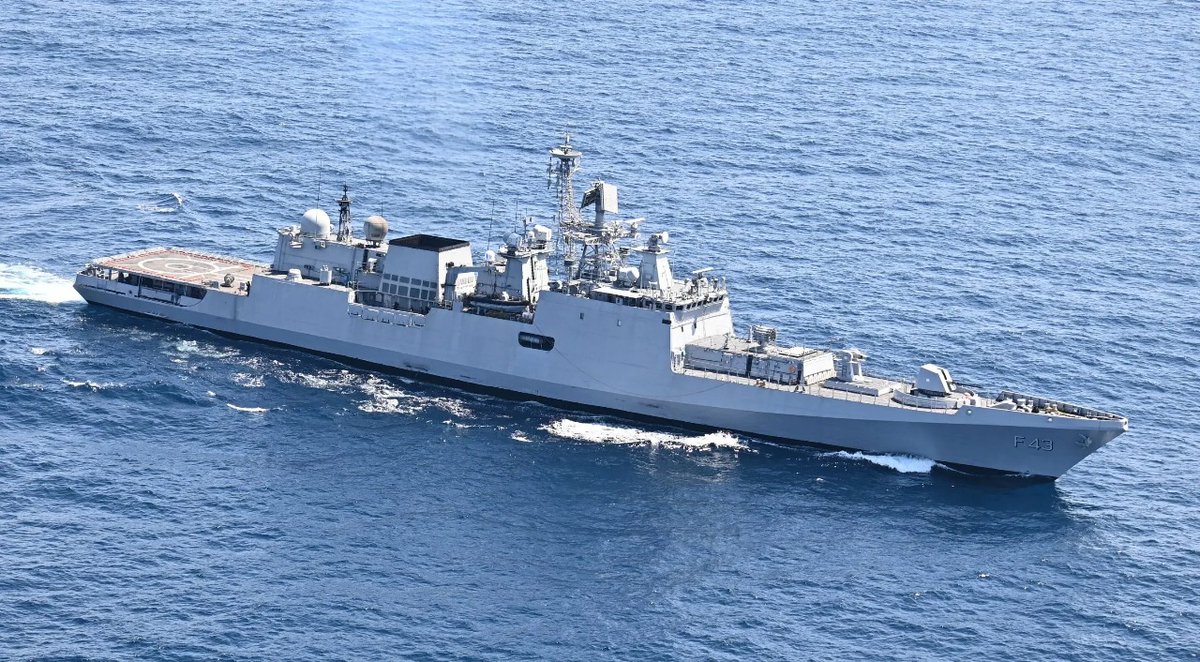In 2025, the IAF lost 1 Mirage 2000, 1 An-32, and 2 Jaguars in two separate crashes!
These incidents raise serious concerns over aging fleets, frequent crashes, and declining squadron strength. ⚠️
But why is this happening?
A thread on the IAF’s operational challenges 🧵
These incidents raise serious concerns over aging fleets, frequent crashes, and declining squadron strength. ⚠️
But why is this happening?
A thread on the IAF’s operational challenges 🧵

1/n Here’s a quick rundown of the crashes IAF has suffered since the start of 2025:
Feb 2025 – Mirage 2000 crash (no casualties)
Mar 7, 2025 – Jaguar crash (no casualties)
Mar 7, 2025 – An-32 crash landing (no casualties)
Apr 2, 2025 – Jaguar crash (1 pilot killed)



Feb 2025 – Mirage 2000 crash (no casualties)
Mar 7, 2025 – Jaguar crash (no casualties)
Mar 7, 2025 – An-32 crash landing (no casualties)
Apr 2, 2025 – Jaguar crash (1 pilot killed)




2/n The rising number of crashes in IAF’s frontline squadrons has raised serious concerns about its impact on India’s warfighting capability. At a time when squadron strength should be increasing, the IAF is struggling to retain what little it has left.
3/n The situation looks even bleaker when you consider that many of the squadrons currently in service are composed of aging MiG-21s and Jaguars — aircraft slated for retirement by the end of the decade. 



4/n In the past 10 years, the only major induction has been 2 squadrons of Rafales (36 jets). Most of the fleet is old and requires constant upgrades just to stay operational. The Su-30 MKI, IAF’s backbone, is finally set for a much-needed midlife upgrade. 

5/n This upgrade will turn them into "Super Sukhois" — a delay-plagued yet essential step. Similarly, MiG-29s, Mirage-2000s, and Jaguars have all received upgrades to remain relevant in today’s evolving air combat environment. 



6/n Still, there's a growing void. Delayed upgrades and slow replacements aren't enough. The April 2 Jaguar crash that killed a young pilot reflects the cost of operating legacy platforms far beyond their intended service life.
7/n That squadron now operates one jet short.
So how did the IAF reach a point where it has just 9 more squadrons than its arch nemesis, the PAF?
The answer lies in a series of decisions and delays over the past two decades.

So how did the IAF reach a point where it has just 9 more squadrons than its arch nemesis, the PAF?
The answer lies in a series of decisions and delays over the past two decades.


8/n Key reasons:
> Retirement of MiG-27s, MiG-23s, and MiG-21s (once the bulk of IAF strength)
> Retirements not matched with timely replacements
> Delayed procurement due to bureaucratic hurdles
> Slow indigenization
> Budgetary constraints
> Retirement of MiG-27s, MiG-23s, and MiG-21s (once the bulk of IAF strength)
> Retirements not matched with timely replacements
> Delayed procurement due to bureaucratic hurdles
> Slow indigenization
> Budgetary constraints
9/n And why so many crashes?
Simple: all of the above leads to life-extension programs for aging jets. The IAF is forced to keep old aircraft flying with expensive upgrades — often long after they should’ve been retired.
Simple: all of the above leads to life-extension programs for aging jets. The IAF is forced to keep old aircraft flying with expensive upgrades — often long after they should’ve been retired.

10/n When you're flying aircraft that should’ve been phased out a decade ago, things go wrong. Yet the IAF must retain them — because without them, India’s airpower would fall below the minimum credible threshold.
11/n That pressure results in increased wear, system failures, and crashes — like the one on April 2, where a brave pilot gave his life, ensuring the safety of those on the ground. 

12/n It’s clear: urgent steps are needed. The IAF, MoD, HAL — all stakeholders must act, at scale, and on priority.
Because a 1960s-era ground attack jet shouldn’t be the face of Indian airpower when adversaries are fielding next-gen tech.
Because a 1960s-era ground attack jet shouldn’t be the face of Indian airpower when adversaries are fielding next-gen tech.
13/n Steps have been taken — but they’re not enough.
No single entity is solely responsible, but the lack of coordination between MoD, IAF, and HAL has played a big part in delayed inductions and procurement logjams.
No single entity is solely responsible, but the lack of coordination between MoD, IAF, and HAL has played a big part in delayed inductions and procurement logjams.
14/n Ending on a positive note: the IAF has ordered ~220 Tejas jets:
> 40 Tejas Mk1
> 180 Tejas Mk1A
With MRFA the infamous fighter procurement circus of IAF also coming to an end with reports suggesting IAF may order 114 rafales soon++
> 40 Tejas Mk1
> 180 Tejas Mk1A
With MRFA the infamous fighter procurement circus of IAF also coming to an end with reports suggesting IAF may order 114 rafales soon++

15/n That brings projected new additions to around 340 fighters over the next decade.
Not enough to fully plug the gap — but enough to keep the IAF’s edge alive and buy time for future systems to enter service.
Not enough to fully plug the gap — but enough to keep the IAF’s edge alive and buy time for future systems to enter service.
If you learned something or enjoyed this thread, follow us for more! @beatsinbrief ❤
We regularly post informative threads and updates on key topics.
We regularly post informative threads and updates on key topics.
• • •
Missing some Tweet in this thread? You can try to
force a refresh























